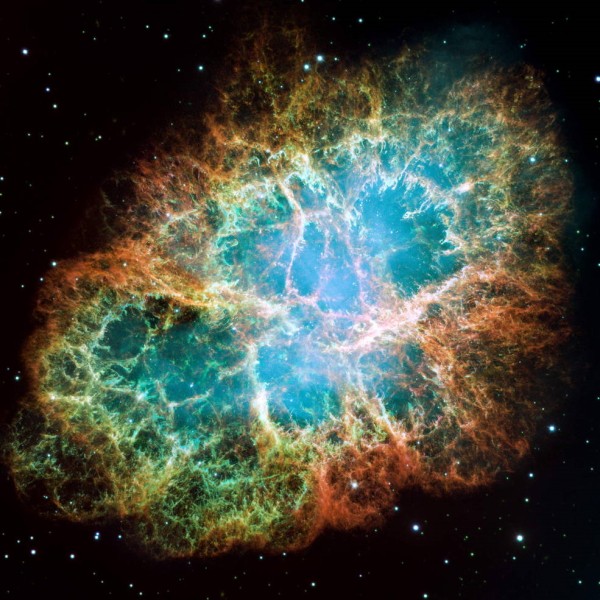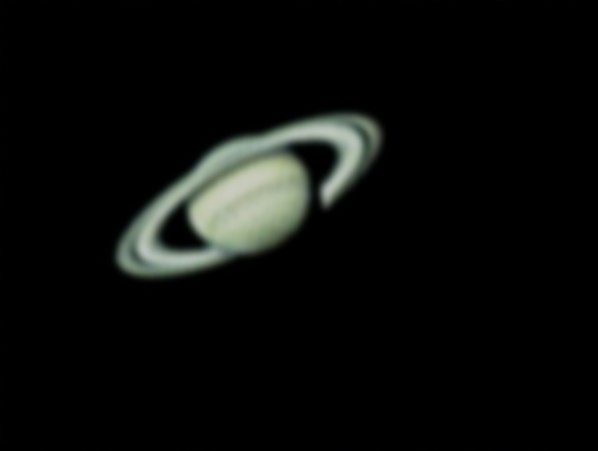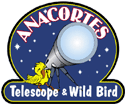Kiss the Sky Tonight -- Month of November 2021

In 1054, Chinese astronomers took notice of a “guest star” that was, for nearly a month, visible in the daytime sky. The “guest star” they observed was actually a supernova explosion, which gave rise to the Crab Nebula, a six-light-year-wide remnant of the violent event. With an apparent magnitude of 8.4 and located 6500 light-years from Earth in the constellation Taurus, the Crab Nebula can be spotted with a small telescope. The nebula was discovered by English astronomer John Bevis in 1731, and later observed by Charles Messier who mistook it for Halley’s Comet. Messier’s observation of the nebula inspired him to create a catalog of celestial objects that might be mistaken for comets. Thus, the Crab Nebula (NGC 1952) took on the designation of Messier 1, or simply M1. This large mosaic of the Crab Nebula was assembled from 24 individual exposures captured by Hubble over three months. The colors in this image do not match exactly what we would see with our eyes but yield insight into the composition of this spectacular stellar corpse. The orange filaments are the tattered remains of the star and consist mostly of hydrogen. The blue in the filaments in the outer part of the nebula represents neutral oxygen. Green is singly ionized sulfur, and red indicates doubly ionized oxygen. These elements were expelled during the supernova explosion. A rapidly spinning neutron star (the ultra-dense core of the exploded star) is embedded in the center of the Crab Nebula. Electrons whirling at nearly the speed of light around the star’s magnetic field lines produce the eerie blue light in the interior of the nebula. The neutron star, like a lighthouse, ejects twin beams of radiation that make it appear to pulse 30 times per second as it rotates. [Video and Content Credits: NASA, the Office of Public Outreach – Space Telescope Science Institute (STScI), JPL – Caltech, Preston Dyches, Christopher Harris, and Lisa Poje] [Image Credit: NASA, ESA, J. Hester and A. Loll (Arizona State University)].
Kiss the Sky Tonight -- Month of November 2021
Welcome to the night sky report for November 2021 -- Your guide to the constellations, deep sky objects, planets, and celestial events that are observable during the month. In November, hunt for the fainter constellations of fall, including Pisces, Aries, and Triangulum. They will guide you to several galaxies and a pair of white stars. Look for spiral galaxy M74 and the Triangulum Galaxy. Enjoy the Moon and planets after sunset all month, plus a lunar eclipse. A partial lunar eclipse will be visible to much of the world on Nov. 18th and 19th.The night sky is truly a celestial showcase. Get outside and explore its wonders from your own backyard.
All month long, if you're up late and cast your gaze toward the east, you'll notice some familiar companions have begun rising late in the night. The familiar stars of Northern winter skies are returning, rising late at night and sitting high in the south by dawn.
You'll find the Pleiades star cluster leading the constellations Taurus the bull and the hunter Orion, followed by the brightest star in the sky, Sirius – all of them back to keep us company on the long winter nights here in the Northern Hemisphere. (And for those in the Southern Hemisphere, they're keeping you company on shorter nights as spring gives way to summer there.)
The dark, cold nights of November make for good hunting for the fainter constellations of fall. Pegasus flies high in the southeast after nightfall and is a good guidepost for some of autumn’s dimmer patterns.
Look south and east of the Great Square of Pegasus for Pisces, the fish. In Greek legend, the two fish, tied together with a rope, represent Aphrodite and Eros, who transformed themselves to escape a monster. The sprawling star pattern includes the Circlet, marking the western fish.
Located below the pattern of the eastern fish is the spiral galaxy M74. M74 is known as a grand design spiral and has two prominent bluish spiral arms wound neatly around the redder galactic nucleus. The nucleus appears redder because there is little new star formation there and many of the hot blue stars have evolved to become red giant stars or have exhausted their fuel altogether.
NASA’s Spitzer Space Telescope provides a dramatic view of the infrared light of the galaxy. The pink hues depict dust lanes that punctuate the spiral arms, showing dense cloud regions where new stars can form.
To the east of the Great Square and Pisces lies the small pattern of Aries the ram. The third-brightest star in the pattern, named Mesarthim, is a lovely pair of white stars, easy to distinguish in a small telescope.
Above Aries is the constellation of Triangulum. The constellation contains the third-largest galaxy of our Local Group, after the Milky Way and Andromeda galaxies: M33, the Triangulum Galaxy. This galaxy, which is relatively large and diffuse from our perspective, can be spotted with binoculars.
NASA’s space telescopes have imaged M33’s spiral features in great detail. Spitzer’s infrared view shows the distribution of dust in its ragged spiral arms. An ultraviolet image from NASA’s GALEX mission shows emissions from hot stars in its disk. Look for the bright blue and white areas to see where star formation has been extremely active over the past few million years. Patches of yellow and gold are regions where star formation was more active 100 million years ago.
From November 6th through the 11th, watch the Moon glide past Venus, Saturn, and Jupiter after sunset in the south/southwest. In particular, if you step outside for a look on November 7th, you'll find the four-day-old crescent Moon just about 2 degrees away from Venus. Should be really pretty, so don't miss it.
And from now through early December, you'll find Jupiter and Saturn drawing a little closer to Venus each night.
A partial lunar eclipse is on the way, taking place overnight on November 18th and 19th, when the Moon slips into Earth's shadow for a couple of hours. Weather permitting; the eclipse will be visible from any location where the Moon appears above the horizon during the eclipse. Depending on your time zone, it'll occur earlier or later in the evening for you.
Now that's a huge swath of the planet that'll be able to see at least part of the eclipse, including North and South America, Eastern Asia, Australia, and the Pacific Region. So check the timing of its visibility for your area.
For U.S. East Coast observers, the partial eclipse begins a little after 2:00 AM, reaching its maximum at 4:00 in the morning. For observers on the West Coast, that translates to beginning just after 11:00 PM, with a maximum at 1:00 AM.
Partial lunar eclipses might not be quite as spectacular as total lunar eclipses – where the Moon is completely covered in Earth's shadow – but they occur more frequently.
And that just means more opportunities to witness little changes in our solar system that sometimes occur right before our eyes.
This time of year provides brave chilly nights to enjoy the constellations, stars, and galaxies of the November sky.
The night sky is always a celestial showcase. Explore its wonders from your own backyard.
The following Deep Sky Objects are found in constellations that peak during the month. Some can be viewed with a small telescope, but the majority will require a moderate to large telescope. The following is adapted from my personal viewing list: "The Guy Pirro 777 Best and Brightest Deep Sky Objects."
Constellation: Aries
NGC 772 Galaxy Herschel 400 H112-1
- NGC 770 Galaxy - Paired with H112-1
NGC 821 Galaxy P234
Constellation: Cetus
IC 1613 Galaxy C51
NGC 157 Galaxy Herschel 400 H3-2
NGC 246 Planetary Nebula C56, Herschel 400 H25-5
NGC 247 Galaxy C62, Herschel 400 H20-5
NGC 584 Galaxy Herschel 400 H100-1
NGC 596 Galaxy Herschel 400 H4-2
NGC 615 Galaxy Herschel 400 H282-8
NGC 720 Galaxy Herschel 400 H105-1
NGC 779 Galaxy Herschel 400 H101-1
NGC 908 Galaxy Herschel 400 H153-1
NGC 936 Galaxy Herschel 400 H23-4
- NGC 941 Galaxy - Paired with H23-4
NGC 1022 Galaxy Herschel 400 H102-1
NGC 1042 Galaxy P221
NGC 1052 Galaxy Herschel 400 H63-1
NGC 1055 Galaxy Herschel 400 H1-1
NGC 1068 Galaxy M77 Cetus A Seyfert Galaxy
Constellation: Fornax
NGC 1097 Galaxy C67
NGC 1201 Galaxy P153
NGC 1316 Galaxy P30 Fornax A Galaxy
NGC 1326 Galaxy P154
NGC 1340 Galaxy P83
NGC 1350 Galaxy P155
NGC 1360 Planetary Nebula P84
NGC 1365 Galaxy P51
NGC 1380 Galaxy P85
NGC 1399 Galaxy P32
NGC 1398 Galaxy P33
NGC 1404 Galaxy P86
Constellation: Leo
NGC 2903 Galaxy Herschel 400 H56-1
NGC 2964 Galaxy Herschel 400 H114-1
- NGC 2968 Galaxy - Paired with H114-1
NGC 3190 Galaxy Herschel 400 H44-2
- NGC 3187 Galaxy - Paired with H44-2
NGC 3193 Galaxy Herschel 400 H45-2
NGC 3226 Galaxy Herschel 400 H28-2 Paired with H29-2
NGC 3227 Galaxy Herschel 400 H29-2 Leo Seyfert Galaxy Paired with H28-2
NGC 3351 Galaxy M95
NGC 3368 Galaxy M96
NGC 3377 Galaxy Herschel 400 H99-2
NGC 3379 Galaxy M105, Herschel 400 H17-1
NGC 3384 Galaxy Herschel 400 H18-1
NGC 3412 Galaxy Herschel 400 H27-1
NGC 3489 Galaxy Herschel 400 H101-2
NGC 3521 Galaxy Herschel 400 H13-1
NGC 3593 Galaxy Herschel 400 H29-1
NGC 3607 Galaxy Herschel 400 H50-2 Paired with H51-2
NGC 3608 Galaxy Herschel 400 H51-2 Paired with H50-2
NGC 3623 Galaxy M65
NGC 3626 Galaxy C40, Herschel 400 H52-2
NGC 3627 Galaxy M66
NGC 3628 Galaxy Herschel 400 H8-5
NGC 3640 Galaxy Herschel 400 H33-2
- NGC 3641 Galaxy - Paired with H33-2
NGC 3655 Galaxy Herschel 400 H5-1
NGC 3686 Galaxy Herschel 400 H160-2
NGC 3810 Galaxy Herschel 400 H21-1
NGC 3900 Galaxy Herschel 400 H82-1
NGC 3912 Galaxy Herschel 400 H342-2
Constellation: Perseus
IC 348 Open Cluster P95
IC 2003 Planetary Nebula P237
NGC 650 Planetary Nebula M76 Little Dumbell Nebula
NGC 651 Planetary Nebula Herschel 400 H193-1 Part of M76
NGC 744 Open Cluster P96
NGC 869 Open Cluster C14a, Herschel 400 H33-6 Double Cluster (West)
NGC 884 Open Cluster C14b, Herschel 400 H34-6 Double Cluster (East)
NGC 957 Open Cluster P97
NGC 1023 Galaxy Herschel 400 H156-1
NGC 1039 Open Cluster M34 Spiral Cluster
NGC 1220 Open Cluster P238
NGC 1245 Open Cluster Herschel 400 H25-6
NGC 1275 Galaxy C24 Perseus A Seyfert Galaxy
NGC 1342 Open Cluster Herschel 400 H88-8
NGC 1444 Open Cluster Herschel 400 H80-8
NGC 1496 Open Cluster P174
NGC 1499 Diffuse Nebula P44 - California Nebula
NGC 1513 Open Cluster Herschel 400 H60-7
NGC 1528 Open Cluster Herschel 400 H61-7
NGC 1545 Open Cluster Herschel 400 H85-8
NGC 1582 Open Cluster P45
NGC 1605 Open Cluster P239
NGC 1624 Open Cluster P240
Constellation: Pegasus
NGC 7078 Globular Cluster M15
NGC 7217 Galaxy Herschel 400 H207-2
NGC 7331 Galaxy C30, Herschel 400 H53-1
NGC 7448 Galaxy Herschel 400 H251-2
NGC 7457 Galaxy P173
NGC 7479 Galaxy C44, Herschel 400 H55-1
NGC 7814 Galaxy C43
Constellation: Pisces
NGC 488 Galaxy Herschel 400 H252-3
NGC 524 Galaxy Herschel 400 H151-1
NGC 628 Galaxy M74
NGC 676 Galaxy P175
Constellation: Taurus
Messier 45 Open Cluster M45 Pleiades
Caldwell 41 Open Cluster C41 Hyades
IC 1995 Diffuse Nebula P64
NGC 1514 Planetary Nebula P120
NGC 1554 Diffuse Nebula P200 Von Struve’s Lost Nebula
NGC 1555 Diffuse Nebula P201 Hind’s Variable Nebula
NGC 1647 Open Cluster Herschel 400 H8-8
NGC 1750 Open Cluster Herschel 400 H43-8
NGC 1807 Open Cluster P65
NGC 1817 Open Cluster Herschel 400 H4-7
NGC 1952 Diffuse Nebula M1 Crab Nebula
Constellation: Triangulum
NGC 598 Galaxy M33 Herschel 400 H17-5 Triangulum Galaxy
NGC 925 Galaxy P66
For more information:
Northern Latitudes:
https://hubblesite.org/resource-gallery/learning-resources/tonights-sky
https://nightsky.jpl.nasa.gov/planner.cfm
https://solarsystem.nasa.gov/skywatching/home/
https://solarsystem.nasa.gov/skywatching/whats-up/
https://www.cfa.harvard.edu/skyreport
http://outreach.as.utexas.edu/public/skywatch.html
https://griffithobservatory.org/explore/observing-the-sky/sky-report/
http://www.beckstromobservatory.com/whats-up-in-tonights-sky-2/
https://www.fairbanksmuseum.org/planetarium/eye-on-the-night-sky
http://dudleyobservatory.org/tonights-sky/
https://cse.umn.edu/mifa/starwatch/2021
http://www.schoolsobservatory.org.uk/learn/astro/nightsky/maps
https://tonightssky.com/MainPage.php
https://www.skymania.com/wp/your-night-sky-this-month/
https://earthsky.org/astronomy-essentials/visible-planets-tonight-mars-jupiter-venus-saturn-mercury
https://www.pbs.org/seeinginthedark/explore-the-sky/your-sky-tonight.html
https://www.timeanddate.com/astronomy/night/
https://www.stelvision.com/en/sky-map/
https://www.adventuresci.org/starcharts
https://www.astromart.com/news/search?category_id=3&q=kiss+the+sky&from=&to
Equatorial Latitudes:
http://www.caribbeanastronomy.com/index.php?option=com_content&task=blogcategory&id=30&Itemid=51
Southern Latitudes:
https://www.scitech.org.au/explore/the-sky-tonight/
https://www.stardome.org.nz/astronomy/star-charts/
Watch Satellites Pass Over Your Location:
https://james.darpinian.com/satellites/
Astromart News Archives:
https://www.astromart.com/news/search?category_id=3&q=.
Do you enjoy reading these postings?
Then click here and buy the Astromart staff a cup of coffee (and maybe even some donuts):
https://astromart.com/support-options
Funding Member
Sponsors
- FocusKnobs
- Matsumoto Company
- SellTelescopes.com
- APM-Telescopes
- astronomy-shoppe
- Waite Research
- Bob's Knobs
- Rouz Astro
- Anacortes Telescope
- BW
- ASTROPHOTOGRAPHY BY MARTIN PUGH
- Astromart Customer Service
- RemoteSkies.net
- BBLABS LLC
- AstroMart LLC
- OMI OPTICS USA LLC
- Desert Sky Astro Products
View all sponsors



